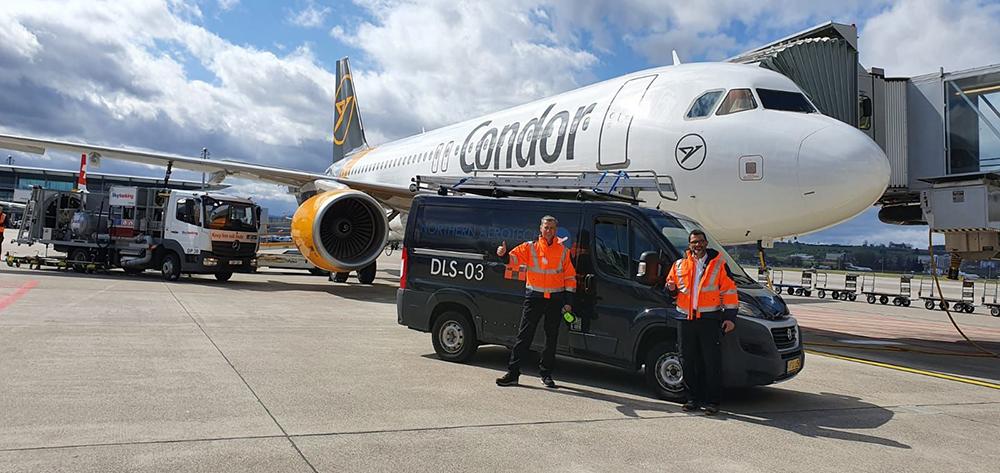
Danish line maintenance provider Northern Aerotech (NAT) has used the pandemic-related downturn within aviation as an opportunity to introduce new growth within the business. It is working to roll out new technology projects and maintenance capabilities in 2022 to grow its customer base and efficiencies.
Following its launch of a new line station in Zurich earlier this year, NAT is now working to get EASA certification for widebody maintenance. According to Alessandro Agrimi, NAT’s chief commercial officer, the MRO previously saw low customer interest for widebody capabilities at its Nordic stations, but it now sees potential with its recent line station growth. “That was not in our portfolio before, but now it makes sense to make that jump and get a wider certification and wider portfolio of approvals to our customers that are demanding this,” says Agrimi, noting that NAT already has engineering staff based in Zurich and Stockholm with widebody maintenance certifications.
According to Agrimi, NAT is also in discussions to take over a hangar at an undisclosed location in Europe that will give it base maintenance capability for Airbus A320 and Boeing 737 aircraft. “At this airport there are no other suppliers with this capability, so we are not competing with anyone,” says Agrimi.
In addition to these new capabilities, NAT is pursuing maintenance efficiencies through two new technology pilot projects. The first will entail the use of an augmented reality (AR) platform to enable NAT’s line maintenance engineers to collaborate with remote experts. To keep costs down, Agrimi says NAT will likely have its engineers access the AR platform through tablets or mobile phones rather than smart glasses. NAT is working with an undisclosed AR technology provider on a deal and seeking regulatory approval for the project, which it is hoping to begin sometime between November 2021 and April 2022.
Agrimi says NAT is also working on a big data project to give its engineers the ability to predict maintenance events. While NAT is not sharing details about the scope of the project, Agrimi says it will entail accessing aircraft data to avoid AOGs.
While many MROs have struggled to stay afloat during the pandemic, Agrimi says NAT has benefited from being a smaller, more nimble company. “At big companies, the decisions are too slow. It can take weeks or months to get a decision and escalate very complex things,” he says, noting that NAT is able to make many decisions in hours. “For us that’s really important, because now that aviation is recovering you need someone that is acting very quickly.”
Agrimi says NAT has also introduced a new business model called “cost plus” in which it more transparently works with airline customers on pricing. “This is something very new and we are starting a few projects with this mentality,” he says, noting that NAT’s new approach is a first in the industry. “We are trying an approach with customers where we are working together. We’re not there to take their milk—it’s not a cow anymore, because [airlines] don’t have the money to do it. We want to be realistic. We don’t want to be the richest, we just want to have a sustainable business.”


